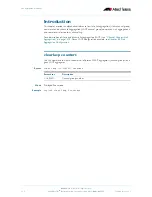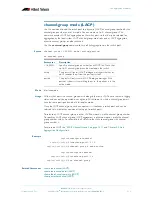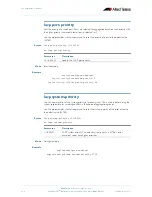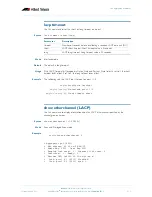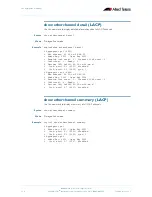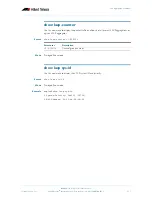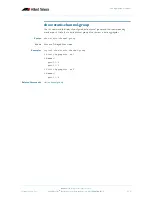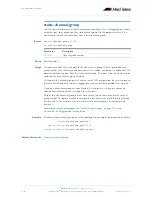
Internet Protocol (IP) Addressing and Protocols
©2008 Allied Telesis Inc. All rights reserved.
22.2
AlliedWare Plus
TM
Operating System Software Reference C613-50003-00 REV E
Software Version 5.2.1
Introduction
This chapter describes how to configure IPv4 addressing and the protocols used to help IP
function on your network.
As well as the familiar Internet, with uppercase “I”, the term internet (with lowercase “i”) can
refer to any network (usually a wide area network) that uses the Internet protocol. This
chapter concentrates on this definition—a generalized network that uses IP as its transport
protocol.
Assigning an IP
Address
To configure your device to perform IP routing (for example, to access the Internet) you need
to configure IP. You also need to configure IP if you want to manage your device from any IP-
based management process (such as SSH, Telnet, or SNMP).
Add an IP address to each of the interfaces that you want to process IP traffic.
You can configure an interface on your device with a static IP address, or with a dynamic IP
address assigned using your device’s DHCP client.
Static IP
addresses
To add a static IP address to an interface, enter interface mode for the interface that you want to
configure, then use the command:
ip address <ip-address> [secondary [label <label>]]
where IPADDR is the IP address followed by a slash then the prefix length. Note that you
cannot specify the mask in dotted decimal notation in this command.
For example, to give the interface vlan1 an address of 192.168.10.10, with a class C subnet
mask, use the command:
The
secondary
parameter allows you to add multiple IP addresses to an interface using this
command. Each interface must have a primary IP address before you can add a secondary
address. Your device treats secondary addresses the same as primary addresses in most
instances, such as responding for ARP requests for the IP address. However, the only packets
generated that have a secondary address as source address are routing updates. You can define
up to 32 secondary addresses on a single interface.
DHCP dynamic
addresses
When you use the DHCP client, it obtains the IP address and subnet mask for the interface,
and other IP configuration parameters, from a DHCP server. To configure an interface to gain
its IP configuration using the DHCP client, use the command:
If an IP interface is configured to get its IP address and subnet mask from DHCP, the interface
does not take part in IP routing until the IP address and subnet mask have been set by DHCP.
If you need to make a static entry in your DHCP server for the device, you need your device's
MAC address, which you can display by using the command:
awplus#
show interface
See
Chapter 52, Dynamic Host Configuration Protocol (DHCP) Introduction
for more
information about DHCP.
awplus(config-if)#
ip address 192.168.10.10/24
awplus(config-if)#
ip address dhcp [client-id <interface>] [hostname <hostname>]



